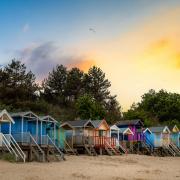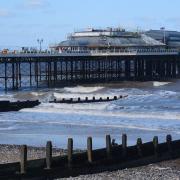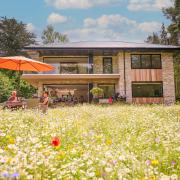Why Scole is a great place to visit during autumn
INN
Halloween month is a good time to visit Scole right on the Norfolk/Suffolk border where the historic Scole Inn is said to be haunted by a tearful, but friendly, ghost called Emma. Poor Emma, or the White Lady of Scole, was murdered by her husband while staying at the inn in the 1750s.
The inn has also served breakfast to King Charles II, and hosted Lord Nelson and a highway man who rode his horse up the grand staircase to avoid capture.
Built as a coaching inn in 1655 it was immediately popular with stage-coach drivers and passengers and so busy that it boasted a vast circular bed which could sleep up to 40 people.

The inn was described by architectural historian Nikolaus Pevsner as one of the ‘most ambitious buildings in England erected specially for the purpose of offering hospitality to travellers’ and sported a fabulous wooden sign, stretching right across the road, with carvings of classical gods and goddesses, angels, the heraldic lions of Norwich and Yarmouth, and Jonah emerging from the mouth of a whale.
Famous Norwich doctor, scientist, linguist and writer Thomas Browne called it ‘the noblest signpost in England.’ It spanned the road for almost 200 years, before being removed because it was too costly to repair.
ROMAN
It’s no wonder Scole is said to be a favourite with ghosts – people have lived here for thousands of years. The first Iron Age (around 1,000BC) buildings discovered in Norfolk were unearthed here and in Roman times it was where the road between Colchester and Caistor St Edmund crossed the river Waveney. Archaeological finds have included Roman coins, brooches, weapons and pottery and the remains of Roman buildings including the first Roman roofing timbers recovered in Western Europe.
SEANCES
As recently as the 1990s Scole was the centre of an international search for life after death.
The Scole Experiment was a series of seances run by two married couples in the cellar of a 17th century farmhouse. The foursome called themselves the Scole Experiment Group and claimed to have captured spirit voices on tape and lights on film. They reported objects mysteriously moving and hovering and images appearing on rolls of factory-sealed film. Similar seances were soon being held in Switzerland, Spain, the Netherlands and California.
Sceptics questioned why complete darkness was necessary but the experimenters insisted they had found a portal to a spirit world. However, five years into the Scole Experiment it was disbanded with the couples talking of ‘an interference contrary to the strict laws of time and space' from 'a group of experimenters from the future whose motives were not entirely benevolent.’ Spooky.
CHURCHES
The history of Scole church goes back to Saxon times. It was badly damaged by fire in the 1960s but the restoration included a beautiful 1960s window by Patrick Reyntiens, who created the famous Baptistry window in Coventry Cathedral. Scole now includes the hamlets of Billingford, Thelveton and Frenze, which each have their own fascinating medieval church, plus Thorpe Parva where all that remains is a dramatically ruined round tower.
POCKET PARK
Scole Pocket Park is a collection of pretty patches of land and paths, managed by the Scole Nature Trails Trust. Volunteers transformed the area into a riverside nature trail with picnic areas, a woodland classroom and even a wooden dragon said to be situated on an ancient ley line.




























